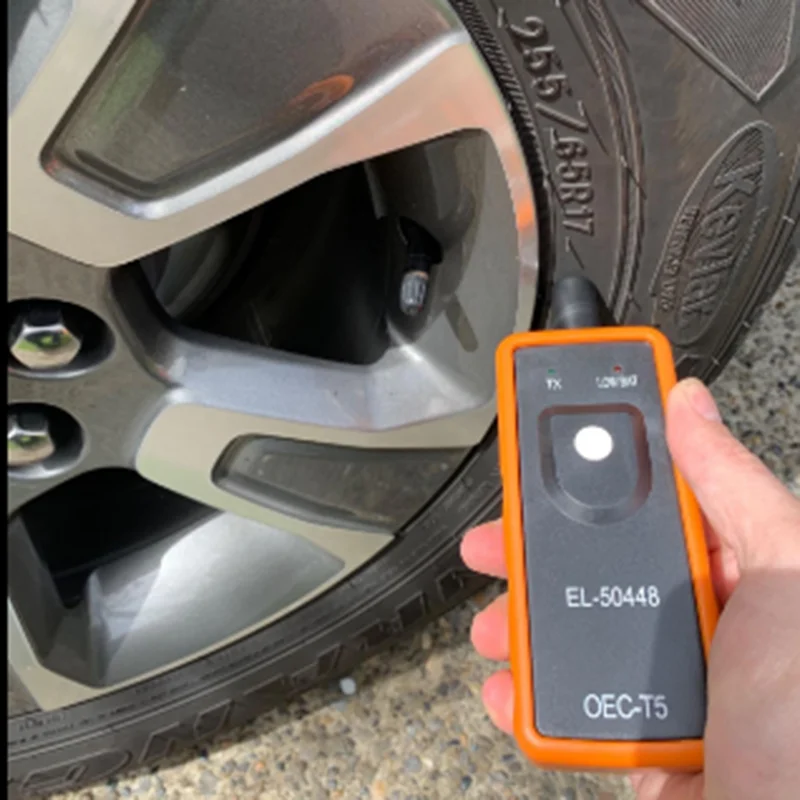Hide Show
Sell/Trade Us Your Car | Click Here To Learn More
Your tire pressure light provides a critical reminder to restore the pressure in your vehicle's tires when it gets low. You should only attempt to reset the light after first addressing the tire pressure in every tire. Once your tires are at the appropriate pressure, the light may go off on its own. If it doesn't go off right away, driving at 50 mph for about 10 minutes should help the tire pressure sensor reset.
If the tire pressure light is still on, there are a few more tricks you can try:
TPMS stands for Tire Pressure Monitoring System. The tire pressure light is one component of this electronic system, providing a visual alert when your tire pressure is low. The TPMS monitors tire pressure using either an indirect or direct method.
An indirect TPMS measures the rate of revolution for each wheel. If a wheel starts spinning faster than anticipated, the system signals to your vehicle's computer that something is amiss with the tire rotation, and your tire pressure light comes on. You must manually reset the monitor in an indirect TPMS system.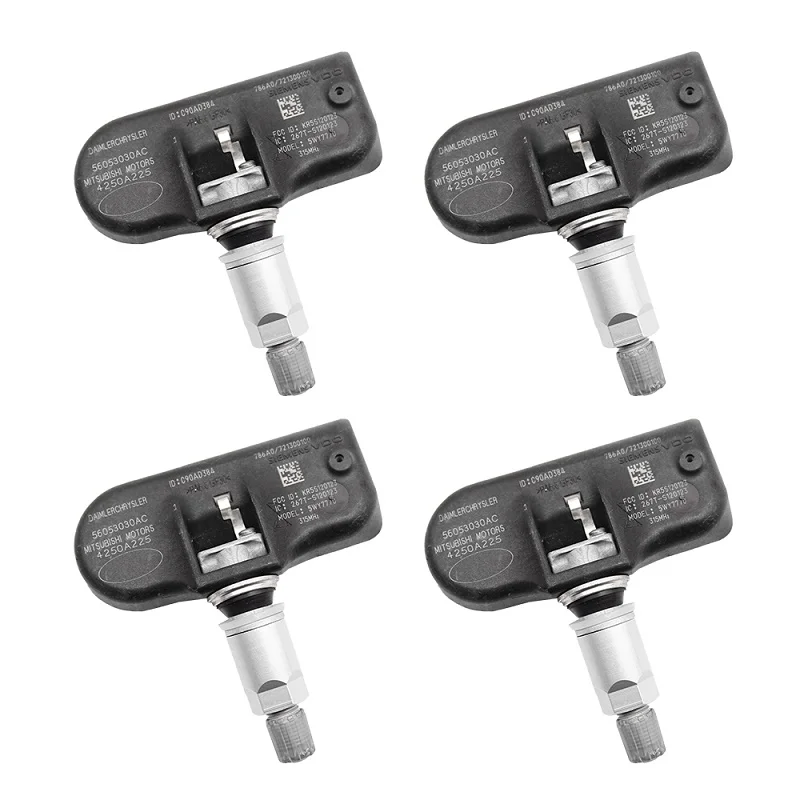
A direct TPMS uses pressure monitoring sensors in each tire to monitor tire pressure exactly. This is a more accurate alternative to an indirect TPMS system. The batteries inside these sensors will last for about 10 years. Direct TPMS systems reset automatically after tire inflation or rotation. You do need to have these sensors resynchronized when you get new tires, which requires a special tool.
Yes, cold weather will affect the air pressure in your tires. Your tires lose one or two pounds per square inch (PSI) for every 10 degrees that the temperature drops. Cold air condenses while warm air expands. Therefore, the colder air in your tires will take up less space in lower temperatures.
You may find that your TPMS light is only illuminated for a short time in the morning on particularly cold days. After about 20 minutes of driving, the air will often warm up and expand, restoring proper pressure in your tires. If the light stays on after 20 minutes on the road, you should add air to your tires as needed to restore the proper pressure. Low tire pressure is hazardous for your vehicle regardless of the cause.
If the light stays on after 20 minutes on the road, you should add air to your tires as needed to restore the proper pressure. Low tire pressure is hazardous for your vehicle regardless of the cause.
When the tire pressure monitor light is on, the first thing you should do is check the pressure in each of your tires, including the spare. Check the manufacturer's recommendation to determine the appropriate pressure for each tire. This is typically between 30 and 35 PSI but may vary. You should measure tire pressure when the tires are cold, which means they have not been driven in the last three hours.
To check the pressure, simply unscrew the valve cap and insert a tire gauge into the valve stem. The gauge will provide a clear reading. Replace the valve cap when you're finished. If your tires are all at the appropriate pressure, there's a malfunction with your TPMS. Bring your vehicle to an authorized dealership service center to diagnose and resolve the issue.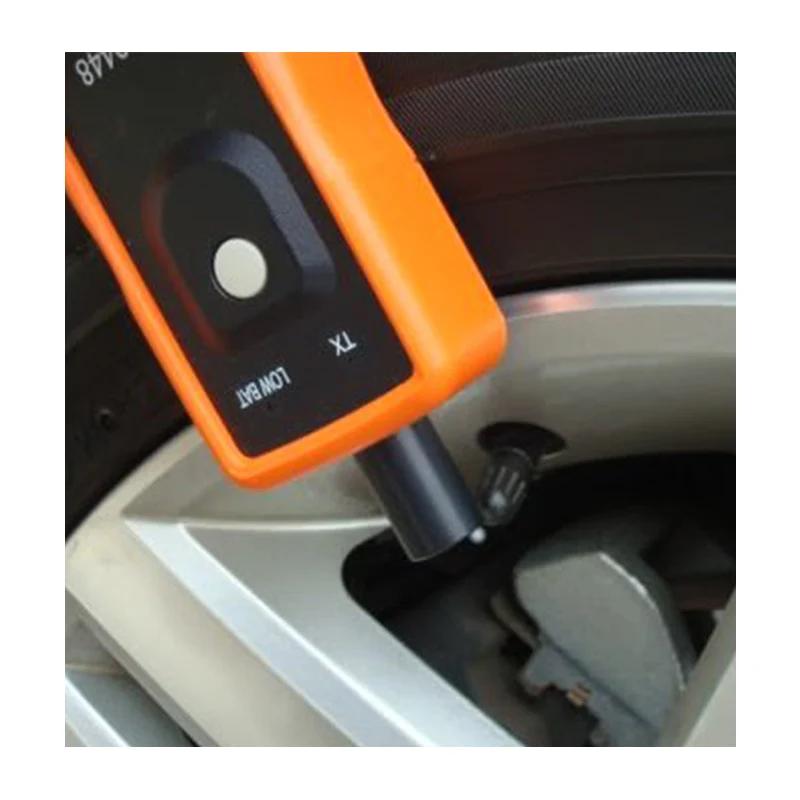
If the tire pressure monitor light is on, you should check your tire pressure as soon as possible. Low tire pressure creates a serious hazard on the road. According to the National Highway Traffic Safety Administration, 738 people died in tire-related crashes in 2017. When tire pressure is low, the tire has more contact with the road. This may cause the tire to overheat, leading to tread separation, excessive tire wear, or a blowout.
Low tire pressure also wreaks havoc on your fuel efficiency. You can save up to 11 cents per gallon simply by keeping your tires properly inflated. You'll also save money on tire replacements with adequate inflation. Keeping your tires properly inflated can add 4,700 miles to the tire's average lifespan.
The tire pressure monitor light gives you valuable information and should not be ignored.
You do not necessarily need to have your TPMS sensors replaced with new tires, but this is a good time to check them and make sure they're still in good condition.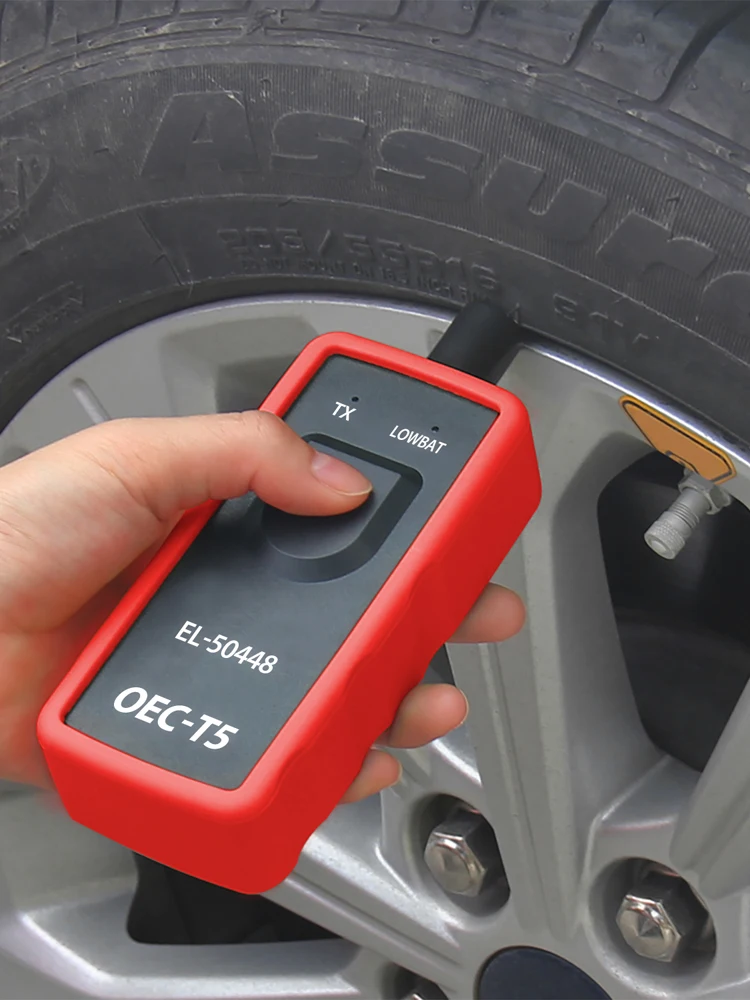 If you have an indirect TPMS system, your mechanic will need to manually reset the sensors after changing your tires. If you have a direct TPMS system, no additional maintenance is required to reset the system.
If you have an indirect TPMS system, your mechanic will need to manually reset the sensors after changing your tires. If you have a direct TPMS system, no additional maintenance is required to reset the system.
A new TPMS system will typically last for about 10 years before the batteries run out. If you have an older vehicle, you may need new sensors every five or six years. Your mechanic can advise you on the best time to replace TPMS sensors for your vehicle. When new sensors are installed, the system must relearn the location of each tire, which requires a detailed series of technical procedures. You should leave this task to a professional.
If you need tire service for your Toyota, come to Kings Toyota for prompt, reliable service. Our highly-trained technicians are equipped to assist with any type of tire issue, whether you need new tires or have a malfunctioning tire pressure sensor light. Make your appointment today.
First Name*
Last Name*
Contact Me by*
EmailPhone
While most shops work with TPMS on a daily basis, use this as a refresher and a tool for new hires - even as information to share with your customers if they want to learn more about the complexity of the relearn process.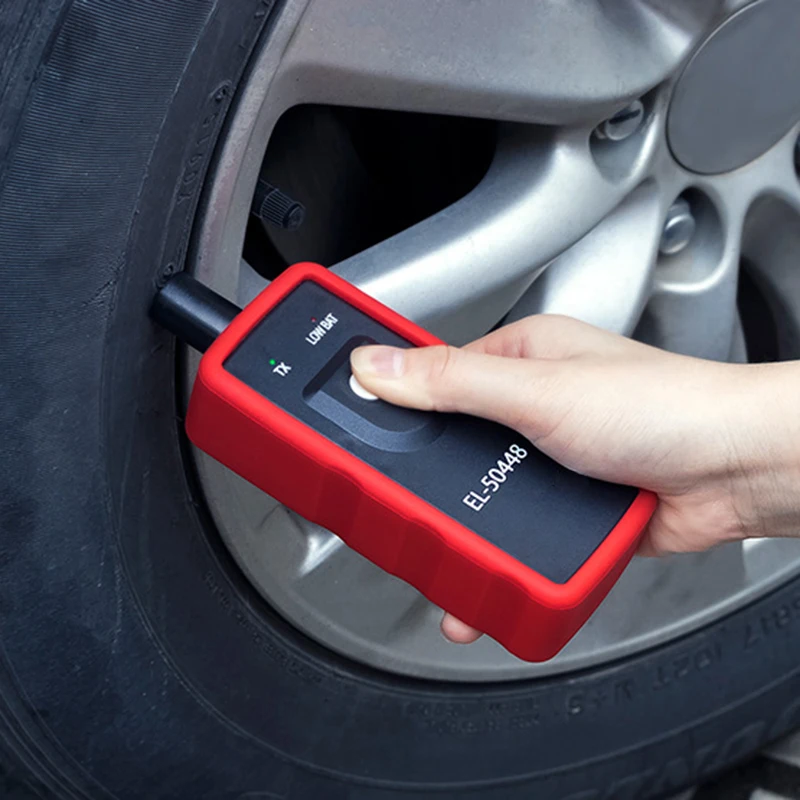
Partnering with an OE sensor manufacturer is one of the most important decisions you’ll make when it comes to your TPMS program. OE manufacturers simply know more than non-OE manufacturers and working directly with OEM’s gives OE TPMS suppliers an edge when it comes to bringing new OE technology to the aftermarket. An OE TPMS supplier can give you the latest technology sooner and with higher quality than a reverse-engineered aftermarket part.
All vehicle makes and models have different service requirements, including the tire pressure monitoring system (TPMS). When TPMS sensors are replaced or wheels have been rotated, a relearn procedure is required. Relearns can be tricky, and if not fully understood, they can cost your shop time and ultimately money. Each vehicle manufacturer has created their own requirements for TPMS relearn procedures, and they are a crucial step to turning the TPMS light off on the dashboard.
The purpose of the relearn is to share the new TPMS sensor IDs to the vehicle. This allows the sensors to “talk” to the vehicle and alert the driver if any tires have low air pressure or if there is a malfunction with the TPMS system.
This allows the sensors to “talk” to the vehicle and alert the driver if any tires have low air pressure or if there is a malfunction with the TPMS system.
If you take advantage of a universal TPMS sensor solution, then keep in mind that by the time you are ready to relearn the vehicle, you should have already programmed the sensor to the proper MMY of the vehicle being serviced. Service professionals often confuse “programming the sensor” with “relearning the vehicle.” These are different actions and the vehicle must still be relearned after the sensors are programmed.
The first necessary step of performing a relearn is to decipher which type of relearn procedure needs to be completed on that specific vehicle: stationary, OBD, or automatic.
A stationary relearn requires a specific sequence designated by the vehicle manufacturer. This can include turning the key a few times, pressing or holding the brake, and many other actions and combinations. Once the sequence is completed correctly, the horn may chirp or lights might blink, signaling that the new sensor IDs have been correctly relearned.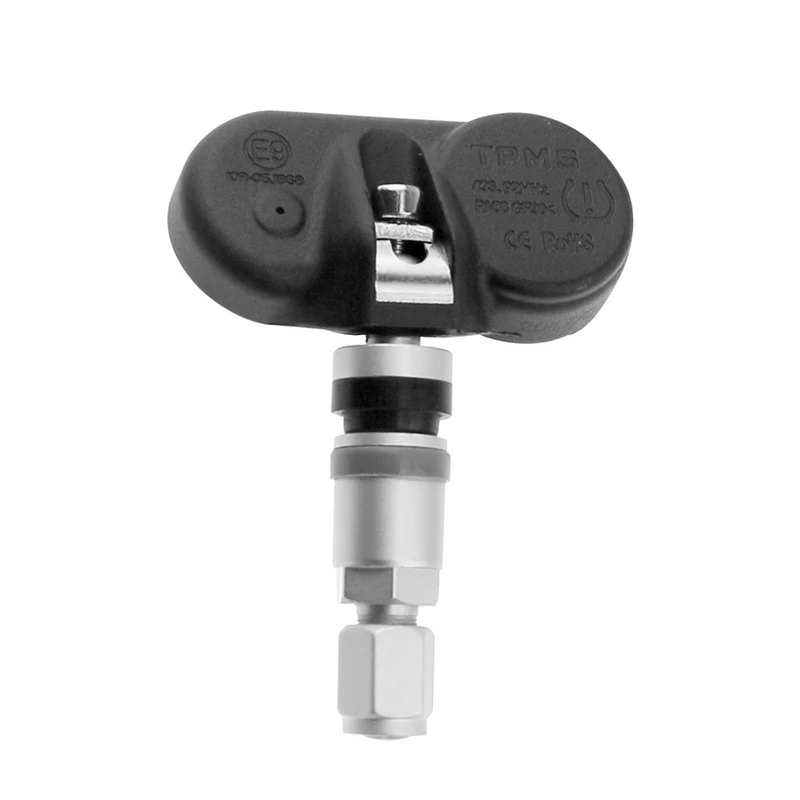
An OBD relearn requires you to connect to the vehicle’s computer via an OBD cord attached to a compatible TPMS scan tool. Once you are connected to the vehicle’s computer, you can then place the vehicle in relearn mode to complete the procedure.
An automatic relearn is actually a bit deceptive in its name as it does require the service professional to drive the vehicle for a certain amount of uninterrupted time at a specified minimum speed. Once those requirements are met, then the sensors are “automatically” relearned to the vehicle.
Keep in mind that there are some special cases. You may need to do a combination of relearn types to complete the relearn. For example, you still might have to drive the vehicle for a specified amount of time after completing a stationary or OBD relearn.
Some vehicles may also require an extra step or an extra tool to complete a TPMS relearn procedure. Nissan, for example, requires a reset tool to properly complete a relearn procedure.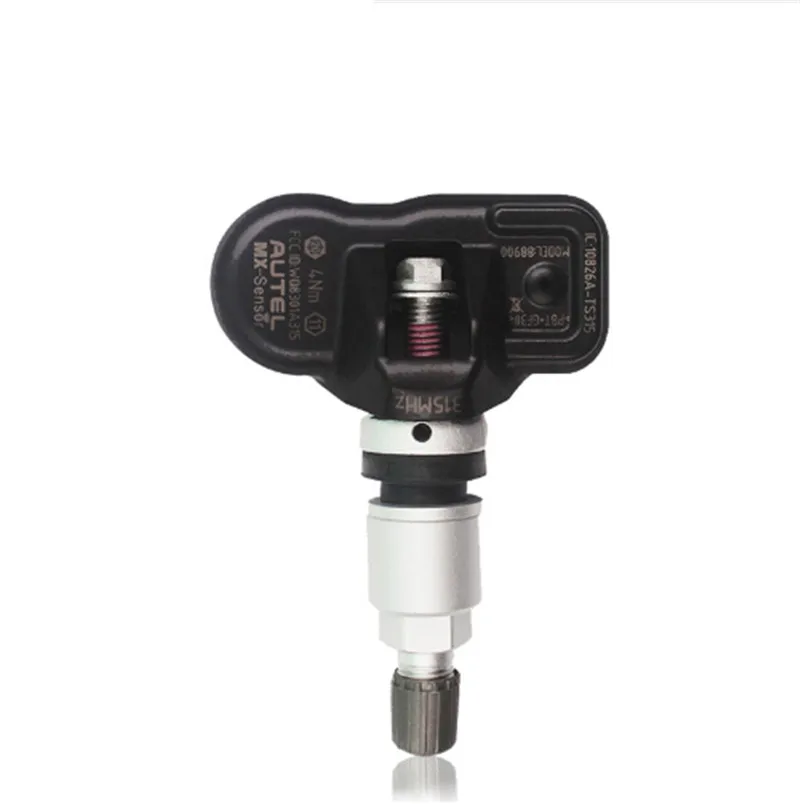 Some Lexus models have a main and second switch that must be added into the step-by-step procedure. More specifically, the Honda Civic requires a “pressure drop” to relearn, where you have to lower the pressure in each wheel and tire assembly below 8 psi for at least one minute before re-inflating. With unique vehicle relearn procedures, it is important that you are always referencing a reliable source for TPMS service.
Some Lexus models have a main and second switch that must be added into the step-by-step procedure. More specifically, the Honda Civic requires a “pressure drop” to relearn, where you have to lower the pressure in each wheel and tire assembly below 8 psi for at least one minute before re-inflating. With unique vehicle relearn procedures, it is important that you are always referencing a reliable source for TPMS service.
There are many ways to find out which type of relearn is required for any specific vehicle. You can check sources such as the Tire Industry Association flip chart, the vehicle’s manual or manufacturers’ websites. In addition to these resources, some TPMS scan tools have these instructions located directly on the tool.
The most important thing you can do when it comes to relearns is to ensure no corners are being cut and every single step is taken in the proper sequence. Some steps may seem small, but skipping them is enough to make you have to start over, wasting time and money.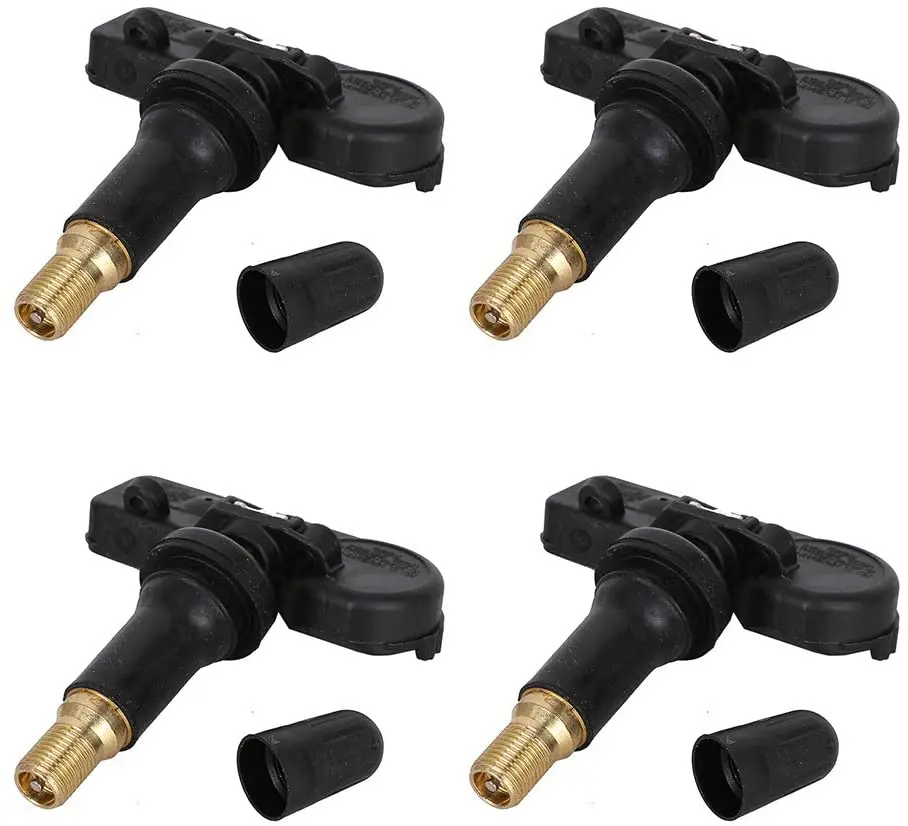
Written by Jacki Lutz for Tire Review
TPMS or Tire Pressure Monitoring System is a set of equipment commonly found in modern cars. Its main job is to alert you if there are problems with tire pressure. For example, one tire has lost pressure - in this case it is not safe to drive, but the system will inform you about this, and you can inflate the wheel to avoid steering problems.
But sometimes the system does not work correctly. Some sensors may fail or the system needs to be rebooted. In this case, you may see a blinking or simply lit tire pressure error indicator on the dashboard. Resetting the pressure monitoring system will help you solve the problem if the sensor is working.
Please note that different vehicles may have different TPMS reset methods, so you may need to try several of them before you know the most effective one.
Initially, you just need to hold the tire pressure sensor reset button for a few seconds until the pressure indicator flashes three times and then turns off.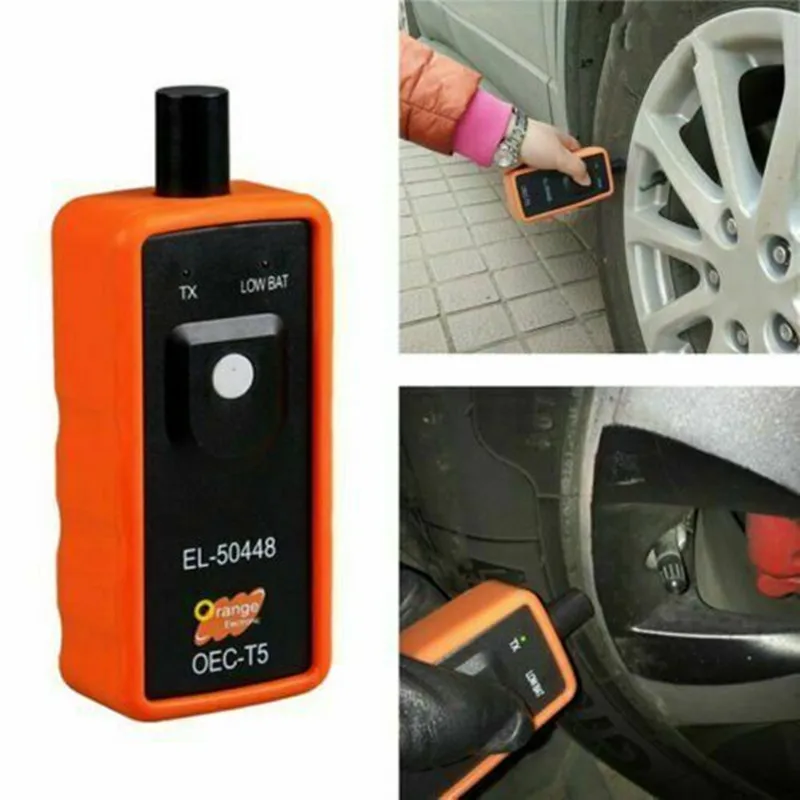 But sometimes it doesn't help much. So we found other ways to calm down the pressure control system.
But sometimes it doesn't help much. So we found other ways to calm down the pressure control system.
First, locate the TPMS reset button, which is usually located somewhere under the steering wheel. Start the car, press and hold the button for 3 seconds. Then drive at a speed of 80 km/h for approximately 10 minutes. Of course, you will need to find a suitable track for this. Steady driving is an important part of resetting tire pressure sensors this way. Of course, before this operation, you will need to inflate the tires to the required pressure.
In some vehicles, you will need to drive on any road and at any speed for 20 minutes after resetting the sensors, as long as you do not turn off the engine.
So, start the car, press the reset button and hold it for three seconds. Do not turn off the engine until 20 minutes have passed. You can drive or just let the engine idle for 20 minutes.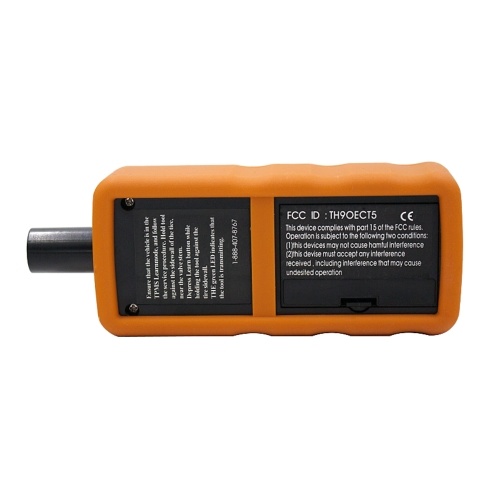 This method of resetting pressure sensors should work for most vehicles. Again, inflate the tires to the correct pressure before resetting the system.
This method of resetting pressure sensors should work for most vehicles. Again, inflate the tires to the correct pressure before resetting the system.
If the simple methods don't work with your machine, try another method. Start the engine so that the tire pressure monitoring system can register the changes. Then inflate the tire 0.2 bar above the recommended level. After a minute, completely deflate the tire. Wait one more minute to reset the sensors. Then inflate the tire to the optimum pressure level and let the engine run for another minute. The indicator should stop flashing.
The idea is to reset the entire engine electronics system by cutting off the power supply from the battery. First, make sure all tires are at the correct pressure. After that, turn off the engine, open the hood and disconnect both terminals from the battery. Wait 10-15 minutes. Reconnect the battery and turn on the ignition to check if the indicator lamp goes out.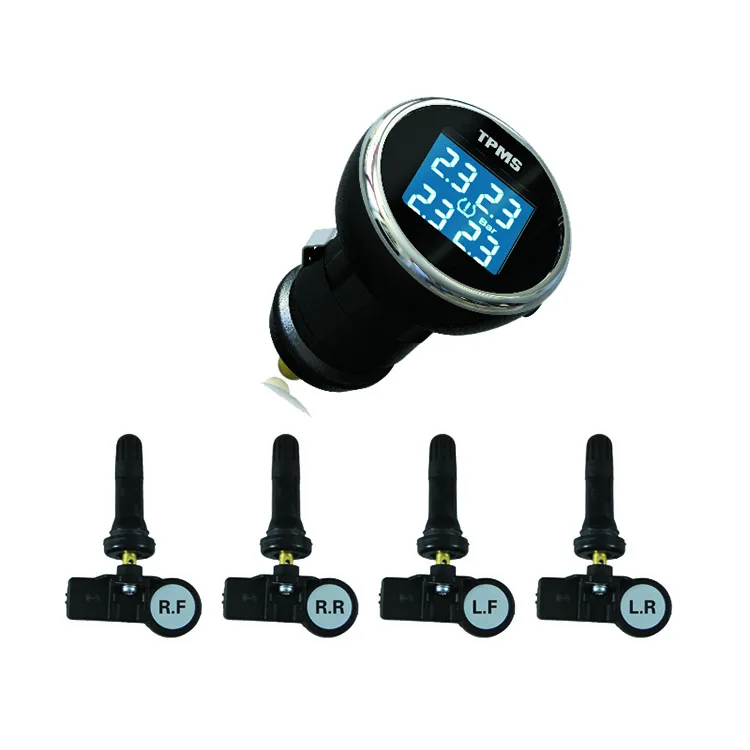
If the above methods do not work with your vehicle, there is another option. Find a manual for your car or open a forum thread that talks about resetting tire pressure sensors in your car. Look for the combination of steps the manufacturer recommends to reset the TPMS system. Sometimes the combination can be quite strange and even complex.
If all methods fail and the error light continues to flash, the problem may be with the sensors. It is the blinking signal of the tire pressure lamp that often indicates a sensor malfunction. If there is a problem with tire pressure, usually the light will just come on and not blink.
This means that if the light is flashing, one of the sensors may be faulty. Replacing the element is not so easy because it is under the tire. The tire must be removed from the rim to replace the sensor.
After replacement, you will still need to reset the pressure control system for the new sensor to work.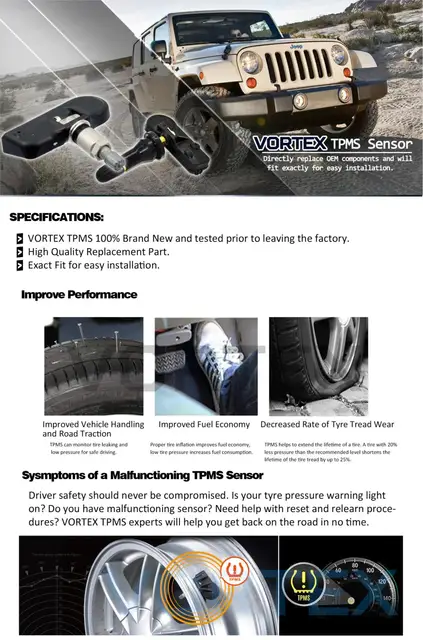 Otherwise, the indicator will flash or light up.
Otherwise, the indicator will flash or light up.
Where is the reset button for the tire pressure sensors?
The button is often located directly below the steering wheel. But there may be different options. If you don't find the TPMS reset button there, look around the steering wheel - it should be somewhere in this area.
Difficult to say for all vehicles, but for most vehicles, the travel time before the tire pressure monitoring system resets should be at least 10-15 minutes. If you turn off the engine earlier than 10 minutes after pressing the reset button, the TPMS will still send some error signals the next time the engine is started.
Drivers occasionally upgrade tires and wheels to larger ones and want their stock pressure control modules to work properly. The problem is that larger or flat-ride tires will have a different optimum pressure level, so the original gauges will always show an error on your dashboard.
One way to solve the problem is to buy other sensors tuned to the desired tire pressure level. Another way is to reset the control system in your car at the service station. Just check which option will be cheaper for you.
It's hard to say why manufacturers haven't added an option to automatically reset tire pressure sensors in cars. In most post-2015 vehicles, the TPMS is autonomous enough that it won't bother you much with reset requests. But in older cars, the system is not as advanced and sometimes a manual reset is required.
Not so long ago, scientists from different countries conducted an experiment, during which it was revealed that only a small part of vehicle owners check the amount of atmosphere in the chambers before going on a trip. Meanwhile, it is insufficient or excessive pressure that often causes increased fuel consumption, uncomfortable driving, or leads to an accident.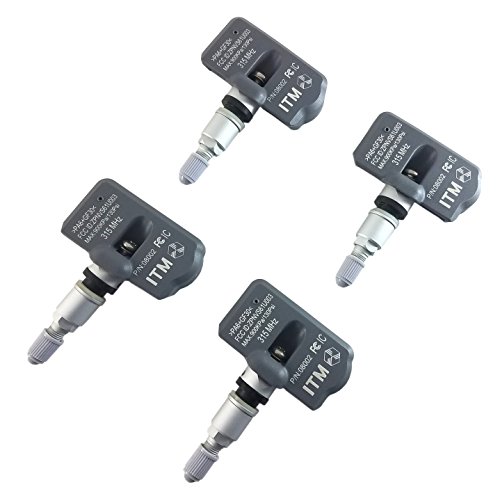
The TPMS system comes to the rescue, designed to control the amount of atmosphere in the chambers and to signal malfunctions in a timely manner. When the tires are properly inflated, the special warning sensor does not light up. However, in some situations, the light comes on. A constantly burning signal will begin to annoy even the calmest driver, especially if the amount of atmosphere in the chambers is ideal. A few simple manipulations will help fix the sensor error, and a couple of tips will tell you how to properly configure the TPMS system.
The TPMS sensitively monitors the amount of atmosphere in each chamber. However, to avoid possible troubles, it is important to know that the indicators are working properly. No, for this you do not have to constantly run around the car with a variety of measuring instruments. You just need to regularly adjust the device.
It is important to remember that for each particular car model, the sensor manufacturer has set its own values for a particular season.
It is these characteristics that must be given to the TPMS system.
Manipulations are quite simple and do not require special experience. It all depends on which variety is used:
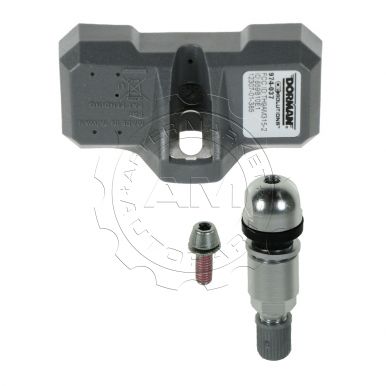 Therefore, it is better to entrust the work to professionals. After completing the installation work, it is necessary to check the correct installation of the caps and pump up the wheels. If readings are taken from the included display, no additional device settings are required.
Therefore, it is better to entrust the work to professionals. After completing the installation work, it is necessary to check the correct installation of the caps and pump up the wheels. If readings are taken from the included display, no additional device settings are required. To prevent the light from flashing again for no reason, it is important to set up the device every time you make a change. For example, if the old wheels were replaced with a new set, balancing was done and so on.
The TPMS is easy to use. The main thing is to carefully study the attached instructions and make sure that the number of atmospheres in the chambers matches those recommended by the manufacturer.
@Firedis.com
External and mechanical models are disabled by removing the sensors, because without removing them, the system will not turn off. There are several ways to render TPMS useless:

The following manipulations can also help to eliminate the error in the system:
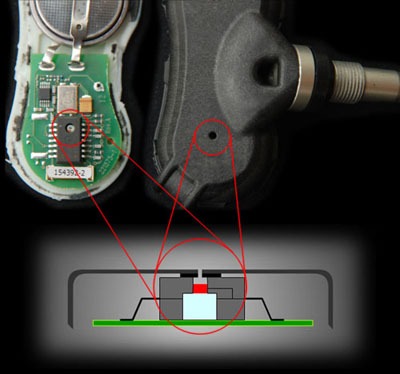 2 bar to it. If the signal continues to burn, you should completely lower the wheels. Then you need to re-inflate the tires, drive 5 km at a speed not exceeding 30 km / h. So the sensor data is completely reset, and the system will stop giving an error.
2 bar to it. If the signal continues to burn, you should completely lower the wheels. Then you need to re-inflate the tires, drive 5 km at a speed not exceeding 30 km / h. So the sensor data is completely reset, and the system will stop giving an error. TPMS is definitely useful and easy to use. But even modern devices have some drawbacks that may force the driver to dismantle the product.
So, tire pressure monitoring has the following disadvantages:
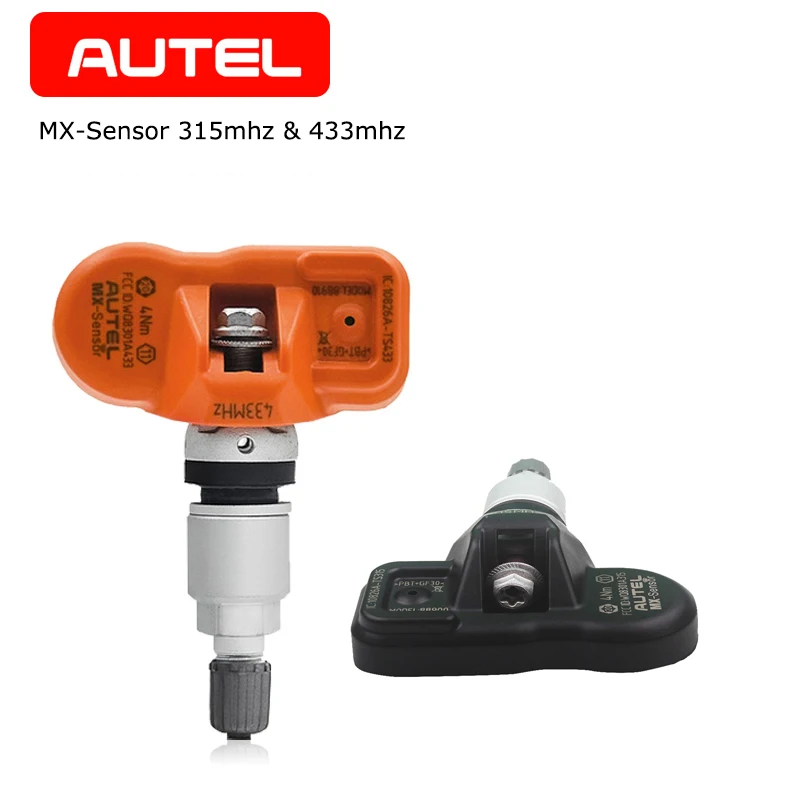 The reason lies in the fact that the angular speeds of the inner and outer wheels in this situation will be different.
The reason lies in the fact that the angular speeds of the inner and outer wheels in this situation will be different. @Creta-fan.ru
Sometimes the above methods of turning off the sensors are not able to solve the problem. In this case, the first step is to check the health of the indicators. To do this, it is better to contact a specialized workshop or an authorized dealer. The most common reason for indicators not working correctly is damage to the device.
Thus, instruments can be damaged:
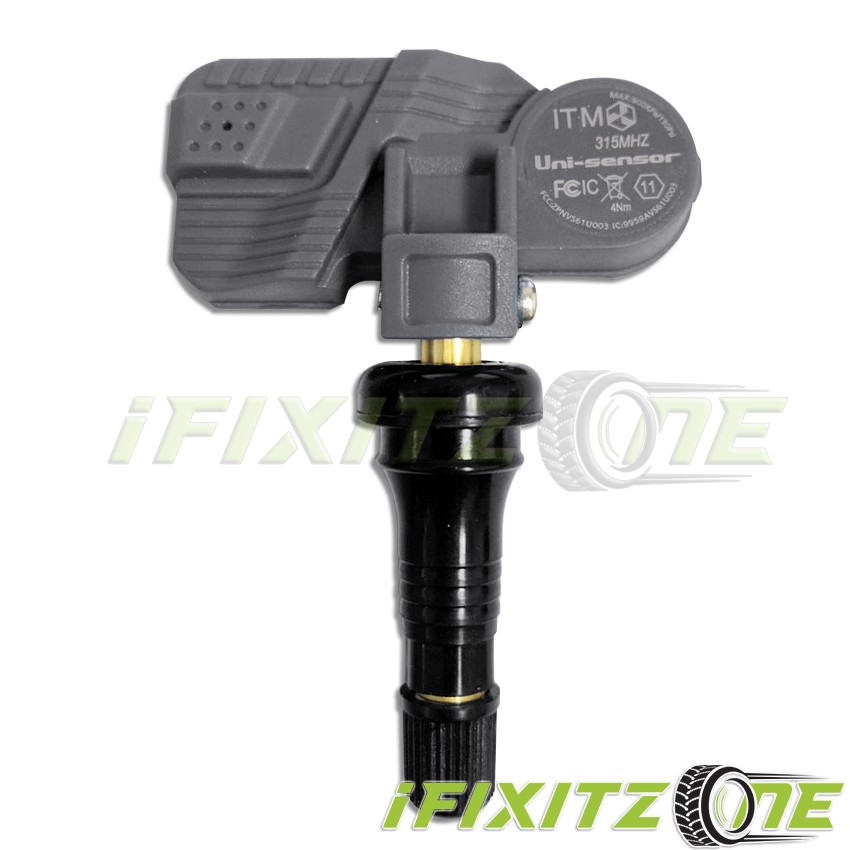
In some cases, the sensors may turn on by themselves, indicating a serious problem. Provoke incorrect operation can:
In the latter case, the ABS indicator will also come on. This suggests that the car needs to be diagnosed in a specialized center where employees will find and fix the problem.
The constantly lit TPMS indicator is an annoying factor for any car enthusiast. Even if everything is fine with the wheels, a faulty indicator deprives the vehicle owner of control over the true amount of atmospheres in the chambers. After all, if the light is on all the time, the motorist will not receive an alert when the camera is really faulty. And this factor already directly affects not only the comfort, but also the safety of the driver and passengers.